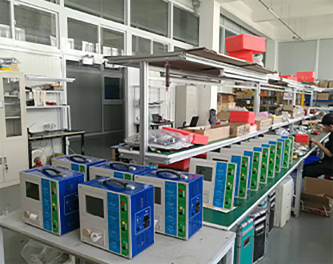 English
English



-
 Afrikaans
Afrikaans -
 Albanian
Albanian -
 Amharic
Amharic -
 Arabic
Arabic -
 Armenian
Armenian -
 Azerbaijani
Azerbaijani -
 Basque
Basque -
 Belarusian
Belarusian -
 Bengali
Bengali -
 Bosnian
Bosnian -
 Bulgarian
Bulgarian -
 Catalan
Catalan -
 Cebuano
Cebuano -
 China
China -
 China (Taiwan)
China (Taiwan) -
 Corsican
Corsican -
 Croatian
Croatian -
 Czech
Czech -
 Danish
Danish -
 Dutch
Dutch -
 English
English -
 Esperanto
Esperanto -
 Estonian
Estonian -
 Finnish
Finnish -
 French
French -
 Frisian
Frisian -
 Galician
Galician -
 Georgian
Georgian -
 German
German -
 Greek
Greek -
 Gujarati
Gujarati -
 Haitian Creole
Haitian Creole -
 hausa
hausa -
 hawaiian
hawaiian -
 Hebrew
Hebrew -
 Hindi
Hindi -
 Miao
Miao -
 Hungarian
Hungarian -
 Icelandic
Icelandic -
 igbo
igbo -
 Indonesian
Indonesian -
 irish
irish -
 Italian
Italian -
 Japanese
Japanese -
 Javanese
Javanese -
 Kannada
Kannada -
 kazakh
kazakh -
 Khmer
Khmer -
 Rwandese
Rwandese -
 Korean
Korean -
 Kurdish
Kurdish -
 Kyrgyz
Kyrgyz -
 Lao
Lao -
 Latin
Latin -
 Latvian
Latvian -
 Lithuanian
Lithuanian -
 Luxembourgish
Luxembourgish -
 Macedonian
Macedonian -
 Malgashi
Malgashi -
 Malay
Malay -
 Malayalam
Malayalam -
 Maltese
Maltese -
 Maori
Maori -
 Marathi
Marathi -
 Mongolian
Mongolian -
 Myanmar
Myanmar -
 Nepali
Nepali -
 Norwegian
Norwegian -
 Norwegian
Norwegian -
 Occitan
Occitan -
 Pashto
Pashto -
 Persian
Persian -
 Polish
Polish -
 Portuguese
Portuguese -
 Punjabi
Punjabi -
 Romanian
Romanian -
 Russian
Russian -
 Samoan
Samoan -
 Scottish Gaelic
Scottish Gaelic -
 Serbian
Serbian -
 Sesotho
Sesotho -
 Shona
Shona -
 Sindhi
Sindhi -
 Sinhala
Sinhala -
 Slovak
Slovak -
 Slovenian
Slovenian -
 Somali
Somali -
 Spanish
Spanish -
 Sundanese
Sundanese -
 Swahili
Swahili -
 Swedish
Swedish -
 Tagalog
Tagalog -
 Tajik
Tajik -
 Tamil
Tamil -
 Tatar
Tatar -
 Telugu
Telugu -
 Thai
Thai -
 Turkish
Turkish -
 Turkmen
Turkmen -
 Ukrainian
Ukrainian -
 Urdu
Urdu -
 Uighur
Uighur -
 Uzbek
Uzbek -
 Vietnamese
Vietnamese -
 Welsh
Welsh -
 Bantu
Bantu -
 Yiddish
Yiddish -
 Yoruba
Yoruba -
 Zulu
Zulu
generation of impulse current
The Generation of Impulse Current Principles and Applications
Impulse currents, characterized by their rapid rise and decay times, are essential in various fields such as electrical engineering, telecommunications, and even biomedical applications. Understanding the generation of these currents is crucial for harnessing their potential effectively while ensuring safety in their applications.
Principles of Impulse Current Generation
Impulse currents are typically generated using specialized circuits designed to produce a sharp voltage spike. This spike can be created through several methods, including the use of capacitors, spark gaps, and magnetic switches. The fundamental principle involves discharging a stored electrical charge rapidly, resulting in a brief but intense current flow.
One of the most common methods of generating impulse currents is through the use of a capacitor discharge circuit. In this setup, a capacitor is charged to a high voltage, and then it is suddenly discharged through a load, creating an impulse. The characteristics of the impulse current, such as its amplitude and duration, can be controlled by adjusting the capacitance and resistance in the circuit. For instance, a smaller resistor allows for a quicker discharge, resulting in a sharper current spike.
Another method is the use of gas-filled tubes or spark gaps, which conduct current when a predefined voltage threshold is reached. When the voltage across the gap becomes sufficient to ionize the gas, it allows a rapid discharge of current, creating a high-energy impulse. This technique is often utilized in surge protection devices and lightning simulation tests.
generation of impulse current

Applications of Impulse Currents
Impulse currents have diverse applications across different sectors. In electrical engineering, they are used to test the robustness of insulation materials and electrical components against sudden surges, as seen during lightning strikes or switching operations. Equipment such as surge generators can simulate these conditions, allowing manufacturers to evaluate and enhance the durability of their products.
In telecommunications, impulse currents find applications in signal transmission and switching. The sharp nature of these currents allows for high-speed data transmission while minimizing signal distortion. This is especially important in high-frequency applications, where maintaining signal integrity is crucial.
Moreover, impulse currents play a significant role in medical technologies. For instance, they are employed in techniques like electroporation, which enhances the permeability of cell membranes, allowing for the introduction of drugs or genetic material into cells. This method holds promise in gene therapy and targeted drug delivery, showcasing the versatility of impulse currents beyond traditional electrical applications.
Conclusion
The generation of impulse currents is a critical area of study in modern technology, with significant implications across various fields. Understanding the principles that underlie the production of these currents allows engineers and scientists to develop more effective applications, whether it be in telecommunications, electrical engineering, or medicine. As technology advances, the potential of impulse currents will likely expand, leading to innovative solutions that harness their unique characteristics for the betterment of society. Researchers and practitioners must continue to explore this fascinating field to unlock more possibilities and enhance existing technologies.
-
Testing Equipment Industry Sees Major Advancements in 2025: Smart & Precision Technologies Lead the WayNewsJun.06,2025
-
Applications of Direct Current Generators in Renewable Energy SystemsNewsJun.05,2025
-
Hipot Tester Calibration and Accuracy GuidelinesNewsJun.05,2025
-
Digital Circuit Breaker Analyzer Features and BenefitsNewsJun.05,2025
-
Benefits of Real-Time Power Quality Monitoring Devices for Industrial EfficiencyNewsJun.05,2025
-
Earth Fault Loop Testing in High-Rise Building Electrical SystemsNewsJun.05,2025



